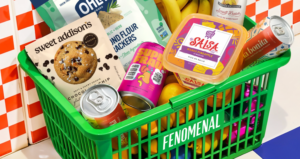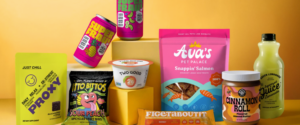- How to Set Up your CPG Business for E-Commerce Success - May 14, 2020
- 3 Costly Mistakes Entrepreneurs Make When Working with Co-packers - February 25, 2020
- Co-packer Costs? How much does it cost to get your food or beverage product produced? - April 8, 2019
The impact of COVID-19 has affected almost every part of the CPG Industry. With consumers spending more time at home, one area that food and beverage CPG has seen massive growth is in online sales.
With consumers doing more online shopping than ever before, brands need to make sure that their e-commerce and direct to consumer (DTC) strategies are built for success.
Whether you are launching a new product through e-commerce/DTC or shifting focus from existing brick and motor sales channels – here are some tips on making sure you are on the right track to building a successful e-commerce business.
Online Sales Channels
When it comes to selling products online there are many different sales channels available. The best approach is testing out several to see which works best for your business.
Make sure you have established a presence in each of these sales channels to be able to capture the largest % of your target audience.
Selling through Amazon

Amazon is the GIANT of online retailers and now with their ownership of Whole Foods, they have established themself as a major player in Food and Beverage CPG. Amazon has a few different options available to brands interested in selling on their platform:
Fulfilled by Amazon (FBA): This is a great way to get started. With FBA, you’ll setup your own Amazon seller account but let Amazon handle your fulfillment. This means you send your product to one of their fulfillment warehouses and they handle all the logistics but you still keep control of your brand, marketing and pricing. There are some limitations around shelf life (minimum 90 days) and temperature – so be sure to check out their meltable policy!
Fulfilled by Merchant (FBM) The other option is setting up a merchant account and handling fulfillment yourself. This is the cheapest option, but not always the best. Having to handle shipping, customer service, and returns can be a daunting task when you are trying to focus on multiple areas of your business. If you’ve decided to go this route, look at partnering with a third party fulfillment provider. More on that below!
Other E-Tailers
With the major brick and mortar retailers having to shift their strategies, many are developing pretty robust e-commerce offerings.
However getting into the large retailers even if just to sell online, can still be tough. There are lots of smaller more targeted platforms that can be a great way to get your products in front of your target customer.
Subscription based models like Thrive Market or health focused e-tailers like Bubble Goods are great alternatives to the traditional big retailers.
StartupCPG launched a great resource of other e-tailers that could be good options for brands looking to get their products listed. Check it out here!
In-house DTC (Selling from your website!)
Selling product directly form your brand’s website is also a great option and owning the entire customer experience can definitely have its advantages. It can save on any costs associated with selling through a third party, whether in margin or added fees. It also gives brands direct access to consumer insights through analyzing customers activity on the site, and can be a great platform to test new products & educate consumers.
When selling directly through your own website you’ll want to make sure that you have the right technology platforms setup to make sure the process is seamless for both the customer and for you when managing the business.
There are a lot of great platform to help manage your e-commerce business. Look through all the options out there, a few examples are Shopify and Bigcommerce. They can make it a lot easier to build a great storefront on your website and manage the transaction in an easy and efficient way.

Fulfillment & Distribution
No matter which online channel you are selling through you will need to figure out your warehousing, fulfillment and distribution strategy.
What happens to your finished product after it’s made? Does your co-packer store it for you? Maybe in the past, you have had your distributor pick up finished product from your co-packer to be delivered to the various retailers where your product is sold.
Well now that you’re building an e-commerce business it’s not always that easy. For the channels where you are in-charge of fulfillment, you’ll need to find a way to store that inventory and fill orders as they come in from your various online storefronts.
Working with a good fulfillment provider that can handle all of that for you is a great solution. Ideally your fulfillment center will be able to:
- Store your product until an order comes in
- Pick and package that order based on your specifications
- Then have the product shipped out to your customer.
Sometimes, your co-packer offers these services, or has great partners that do, so definitely discuss your needs with them.
Often you can find a fulfillment provider that will be able to integrate directly with your store front technology so that whenever an order comes in, they immediately get to work.
When looking for a fulfillment center make sure you discuss all of these options and see what tools they can offer to streamline your logistics.
Packaging & Customer Experience
One of the best parts of selling products DTC is the brand is able to completely control the customer experience. That includes how they interact with your website and the content you provide, how they pay for your product, and lastly how they receive it.
A big part of their experience once receiving the product comes down to packaging design. There are many ways to make an impression on your customer beyond just your product.
- Is your primary and secondary packaging branded?
- Are you using recycled or eco-friendly packaging materials?
- Did you include additional content about your product that is informative?
Make sure that you have communicated all of these specifications with your fulfillment provider as well so that they know how to accurately pick and pack each order.
From the minute that package lands on your customer’s doorstep up until when they are eating or drinking your product is an experience. Make sure that you’ve done everything you can to make it as enjoyable as possible and one that will make a lasting impression on your consumer.



